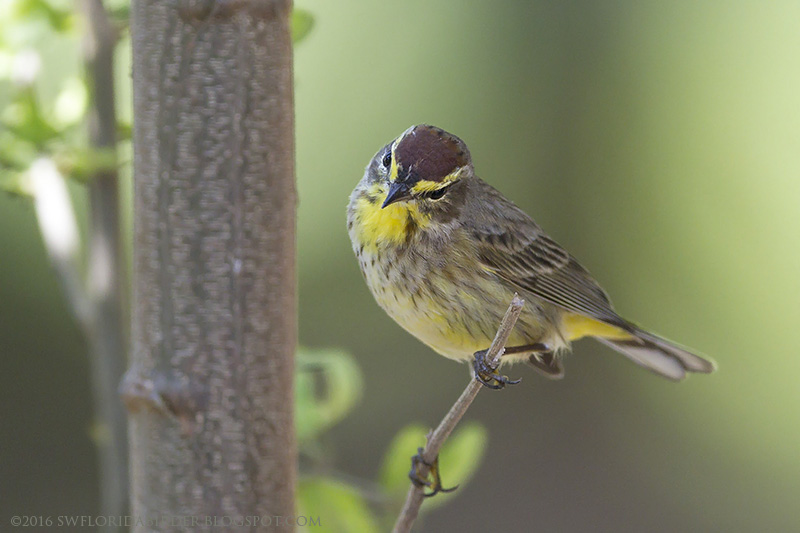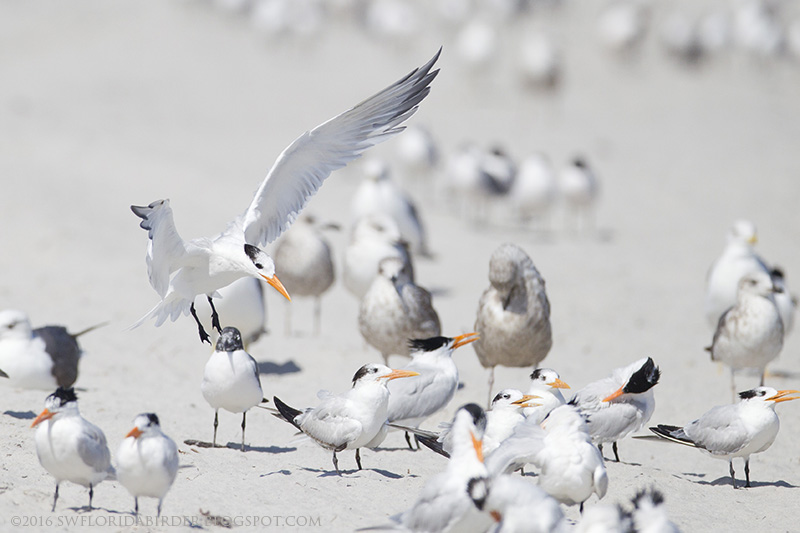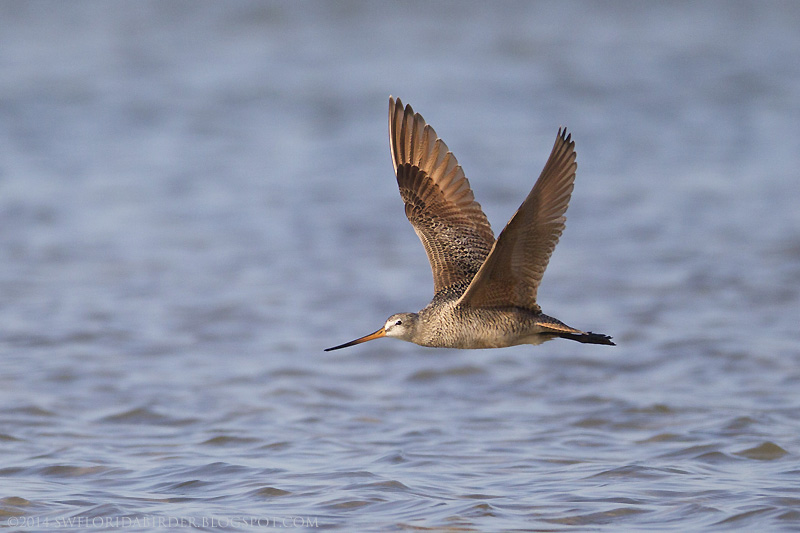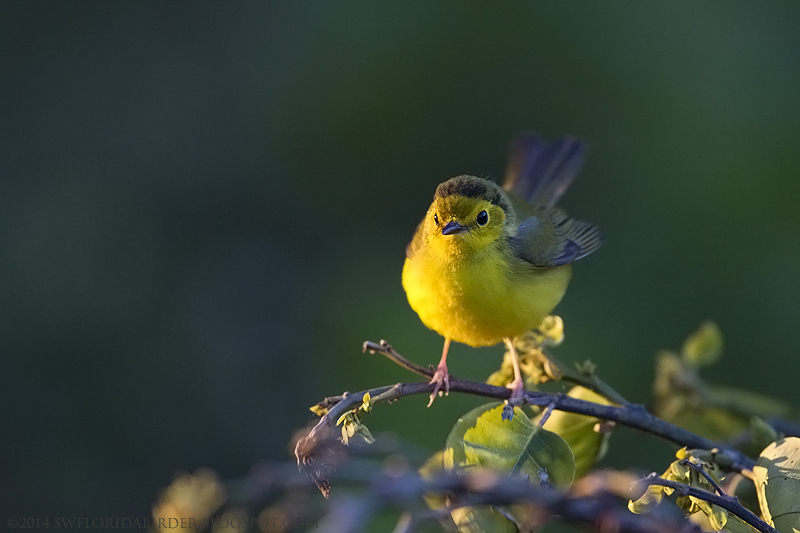Runs across Alligator Alley have become relatively frequent as rare birds continue to be found in south Florida.
The Indian Peafowl above (image 1) was photographed at Crandon Park in March 2016.
In mid-March another American Birding Association Code 5 specialty was discovered at Crandon Park in Key Biscayne by Otto and Jose Zequeira on the 13th. The Cuban Pewee with only four previously accepted records in the ABA area drew my attention.
The Great Crested Flycatcher above (image 2) was photographed at Crandon Park in March 2016.
The Cape May Warbler above (image 3) was photographed at Crandon Park in March 2016.
The Yellow-rumped Warbler above (image 4) was photographed at Crandon Park in March 2016.
The Egyptian Goose above (image 5) was photographed at Crandon Park in March 2016.
The Palm Warbler above (image 6) was photographed at Crandon Park in March 2016.
The Indian Peafowl above (image 7) was photographed at Crandon Park in March 2016.
The Indian Peafowl above (image 8) was photographed at Crandon Park in March 2016.
The Black-and-white Warbler with prey above (image 9) was photographed at Crandon Park in March 2016.
The Indian Peafowl above (image 10) was photographed at Crandon Park in March 2016.
The pewee was seen again on the 14th. This was a signal of sorts that there would be a much better chance to encounter the bird that didn't belong here. Thus navigator Tom Obrock and I made the trip across the Florida peninsula arriving at Crandon Park at about 0900.
The Indian Peafowl above (image 11) was photographed at Crandon Park in March 2016.
The Black-and-white Warbler with prey above (image 12) was photographed at Crandon Park in March 2016.
The Black-and-white Warbler with prey above (image 13) was photographed at Crandon Park in March 2016.
The Palm Warbler above (image 14) was photographed at Crandon Park in March 2016.
The Palm Warbler above (image 15) was photographed at Crandon Park in March 2016.
The Yellow-rumped Warbler above (image 16) was photographed at Crandon Park in March 2016.
The Anhinga above (image 17) was photographed at Crandon Park in March 2016.
The Cape May Warbler above (image 18) was photographed at Crandon Park in March 2016.
The Cape May Warbler above (image 19) was photographed at Crandon Park in March 2016.
The weather was good. The traffic was heavy. The litter at Crandon Park was prolific. It was difficult to ignore the latter in the seven hours of observation in hopes of seeing the Cuban Pewee. The wildlife didn't seem to mind.
The Yellow-rumped Warbler above (image 20) was photographed at Crandon Park in March 2016.
The Yellow-rumped Warbler above (image 21) was photographed at Crandon Park in March 2016.
The Palm Warbler above (image 22) was photographed at Crandon Park in March 2016.
The Indian Peafowl above (image 23) was photographed at Crandon Park in March 2016.
The Indian Peafowl above (image 24) was photographed at Crandon Park in March 2016.
The Black-and-white Warbler above (image 25) was photographed at Crandon Park in March 2016.
The Black-and-white Warbler above (image 26) was photographed at Crandon Park in March 2016.
The Turkey Vulture above (image 27) was photographed at Crandon Park in March 2016.
The Palm Warbler above (image 28) was photographed at Crandon Park in March 2016.
Trails are extensive at the southern end of Crandon Park which Tom explored much more than I did. I settled down at the area where the pewee had been seen and soaked up the shade. In addition to Tom's eBird checklist a European Starling and Anhinga were personally observed.
The Brown Basilisk above (image 29) was photographed at Crandon Park in March 2016.
The Black Spiny-tailed Iguana above (image 30) was photographed at Crandon Park in March 2016.
The Yellow-throated Vireo above (image 31) was photographed at Crandon Park in March 2016.
The Blue Jay above (image 32) was photographed at Crandon Park in March 2016.
The Eurasian Collared-Dove above (image 33) was photographed at Crandon Park in March 2016.
The Sandhill Crane above (image 34) was photographed at Crandon Park in March 2016.
The Great Black-backed Gull above (image 35) was photographed at Crandon Park in March 2016.
The Lesser Black-backed Gull above (image 36) was photographed at Crandon Park in March 2016.
The Lesser Black-backed Gull above (image 37) was photographed at Crandon Park in March 2016.
It was a disappointment that the Cuban Pewee was missed by Tom Obrock and me on the 15th. The Cuban Pewee has not been reported again at Crandon Park as of this writing. There was periodic warbler activity and a good collection of shorebirds on the beach which distracted me.
The Double-crested Cormorant above (image 38) was photographed at Crandon Park in March 2016.
The Royal Tern above (image 39) was photographed at Crandon Park in March 2016.
The Double-crested Cormorant above (image 40) was photographed at Crandon Park in March 2016.
The Royal Tern above (image 41) was photographed at Crandon Park in March 2016.
The Laughing Gull above (image 42) was photographed at Crandon Park in March 2016.
The Double-crested Cormorant above (image 43) was photographed at Crandon Park in March 2016.
The Lesser Black-backed Gull above (image 44) was photographed at Crandon Park in March 2016.
For the record, image 29 was rotated 90 degrees clockwise to allow a significantly tighter view of the subject which improves its aesthetics. Some of you with keen eyes may have noticed that especially knowing that I present all images in the blog chronologically.
The Lesser Black-backed Gull above (image 45) was photographed at Crandon Park in March 2016.
Please be sure to be reminded about this weekly Southwest Florida Wildlife Blog with the email gadget located at the top of the page.
The Black Spiny-tailed Iguana above (image 46) was photographed at Crandon Park in March 2016.
Showing posts with label yellow-throated vireo. Show all posts
Showing posts with label yellow-throated vireo. Show all posts
Friday, April 1, 2016
Friday, April 25, 2014
San Carlos Bay To Tampa Bay: Part II
This article highlights the latter part of the day on 1 April when I traveled with Tom Obrock to Tampa Bay's Fort De Soto Park which offered two life birds for me.
The Black-and-white Warbler above was photographed at Fort De Soto Park in April 2014.
Earlier in the day Bunche Beach was good with thought of Mangrove Cuckoo but missed it as expected. Mergansers were unexpectedly seen not too far from the beach and won't hesitate to get in the water where they were for better observation in the future.
The Black-and-white Warbler above was photographed at Fort De Soto Park in April 2014.
The Northern Parula above was photographed at Fort De Soto Park in April 2014.
The Hooded Warbler above was photographed at Fort De Soto Park in April 2014.
The Worm-eating Warbler above was photographed at Fort De Soto Park in April 2014.
The Yellow-throated Vireo above was photographed at Fort De Soto Park in April 2014.
The Yellow-throated Vireo above was photographed at Fort De Soto Park in April 2014.
The Hooded Warbler above was photographed at Fort De Soto Park in April 2014.
The Hooded Warbler above was photographed at Fort De Soto Park in April 2014.
The Hooded Warbler above was photographed at Fort De Soto Park in April 2014.
The arrival at Fort De Soto occurred not too late in the day with time to traverse virtually the entire park. My favored stop on this visit was the East Beach Woods. It was here that Hooded Warbler was in very good numbers and active allowing my first observation of the species.
The Hooded Warbler above was photographed at Fort De Soto Park in April 2014.
The Hooded Warbler above was photographed at Fort De Soto Park in April 2014.
The Hooded Warbler above was photographed at Fort De Soto Park in April 2014.
The White-eyed Vireo above was photographed at Fort De Soto Park in April 2014.
The White-eyed Vireo above was photographed at Fort De Soto Park in April 2014.
The White-eyed Vireo above was photographed at Fort De Soto Park in April 2014.
The Prothonotary Warbler above was photographed at Fort De Soto Park in April 2014.
The White-eyed Vireo above was photographed at Fort De Soto Park in April 2014.
The Prothonotary Warbler above was photographed at Fort De Soto Park in April 2014.
The Gulf Pier offered a small flock of foraging Red Knot. A few of the birds were banded with one (9KX) having inexplicably lost a foot since its previous sighting according to Ron Smith. A pair of Black Scoter were observed here as well with Tom describing them as very late.
The Prothonotary Warbler above was photographed at Fort De Soto Park in April 2014.
The Red Knot above was photographed at Fort De Soto Park in April 2014.
The Black Scoter above was photographed at Fort De Soto Park in April 2014.
The Great Horned Owl above was photographed at Fort De Soto Park in April 2014.
The Great Horned Owl above was photographed at Fort De Soto Park in April 2014.
The juvenile Great Horned Owl above was photographed at Fort De Soto Park in April 2014.
The Great Horned Owl above was photographed at Fort De Soto Park in April 2014.
The Yellow-bellied Sapsucker above was photographed at Fort De Soto Park in April 2014.
The Yellow-bellied Sapsucker above was photographed at Fort De Soto Park in April 2014.
The next stop was the North Beach with a quick drive made through the Arrowhead Picnic Area. Shore and wading birds were very few and far between at the lagoons although the tide appeared favorably low. An unruly kid observed chasing a Wood Stork may have had something to do with the conditions.
The Yellow-bellied Sapsucker above was photographed at Fort De Soto Park in April 2014.
The Marbled Godwit above was photographed at Fort De Soto Park in April 2014.
The Hooded Warbler above was photographed at Fort De Soto Park in April 2014.
The Hooded Warbler above was photographed at Fort De Soto Park in April 2014.
The Hooded Warbler above was photographed at Fort De Soto Park in April 2014.
The Hooded Warbler above was photographed at Fort De Soto Park in April 2014.
The Hooded Warbler above was photographed at Fort De Soto Park in April 2014.
The Hooded Warbler above was photographed at Fort De Soto Park in April 2014.
The Hooded Warbler above was photographed at Fort De Soto Park in April 2014.
At the East Beach Woods Tom and I observed the Great Horned Owls with both juveniles very active though no flight was observed. Tom quickly identified the Yellow-bellied Sapsucker that was silently working the cypress trees for insects.
The Hooded Warbler above was photographed at Fort De Soto Park in April 2014.
The Hooded Warbler above was photographed at Fort De Soto Park in April 2014.
The Hooded Warbler above was photographed at Fort De Soto Park in April 2014.
The Hooded Warbler above was photographed at Fort De Soto Park in April 2014.
The Hooded Warbler above was photographed at Fort De Soto Park in April 2014.
The Hooded Warbler above was photographed at Fort De Soto Park in April 2014.
The Hooded Warbler above was photographed at Fort De Soto Park in April 2014.
The Hooded Warbler above was photographed at Fort De Soto Park in April 2014.
And finally we returned to the East Beach Woods for better observation of the warblers. Tom's report from this trip may be seen here.
The Hooded Warbler above was photographed at Fort De Soto Park in April 2014.
Please also see: San Carlos Bay To Tampa Bay: Part I
The Black-and-white Warbler above was photographed at Fort De Soto Park in April 2014.
Earlier in the day Bunche Beach was good with thought of Mangrove Cuckoo but missed it as expected. Mergansers were unexpectedly seen not too far from the beach and won't hesitate to get in the water where they were for better observation in the future.
The Black-and-white Warbler above was photographed at Fort De Soto Park in April 2014.
The Northern Parula above was photographed at Fort De Soto Park in April 2014.
The Hooded Warbler above was photographed at Fort De Soto Park in April 2014.
The Worm-eating Warbler above was photographed at Fort De Soto Park in April 2014.
The Yellow-throated Vireo above was photographed at Fort De Soto Park in April 2014.
The Yellow-throated Vireo above was photographed at Fort De Soto Park in April 2014.
The Hooded Warbler above was photographed at Fort De Soto Park in April 2014.
The Hooded Warbler above was photographed at Fort De Soto Park in April 2014.
The Hooded Warbler above was photographed at Fort De Soto Park in April 2014.
The arrival at Fort De Soto occurred not too late in the day with time to traverse virtually the entire park. My favored stop on this visit was the East Beach Woods. It was here that Hooded Warbler was in very good numbers and active allowing my first observation of the species.
The Hooded Warbler above was photographed at Fort De Soto Park in April 2014.
The Hooded Warbler above was photographed at Fort De Soto Park in April 2014.
The Hooded Warbler above was photographed at Fort De Soto Park in April 2014.
The White-eyed Vireo above was photographed at Fort De Soto Park in April 2014.
The White-eyed Vireo above was photographed at Fort De Soto Park in April 2014.
The White-eyed Vireo above was photographed at Fort De Soto Park in April 2014.
The Prothonotary Warbler above was photographed at Fort De Soto Park in April 2014.
The White-eyed Vireo above was photographed at Fort De Soto Park in April 2014.
The Prothonotary Warbler above was photographed at Fort De Soto Park in April 2014.
The Gulf Pier offered a small flock of foraging Red Knot. A few of the birds were banded with one (9KX) having inexplicably lost a foot since its previous sighting according to Ron Smith. A pair of Black Scoter were observed here as well with Tom describing them as very late.
The Prothonotary Warbler above was photographed at Fort De Soto Park in April 2014.
The Red Knot above was photographed at Fort De Soto Park in April 2014.
The Black Scoter above was photographed at Fort De Soto Park in April 2014.
The Great Horned Owl above was photographed at Fort De Soto Park in April 2014.
The Great Horned Owl above was photographed at Fort De Soto Park in April 2014.
The juvenile Great Horned Owl above was photographed at Fort De Soto Park in April 2014.
The Great Horned Owl above was photographed at Fort De Soto Park in April 2014.
The Yellow-bellied Sapsucker above was photographed at Fort De Soto Park in April 2014.
The Yellow-bellied Sapsucker above was photographed at Fort De Soto Park in April 2014.
The next stop was the North Beach with a quick drive made through the Arrowhead Picnic Area. Shore and wading birds were very few and far between at the lagoons although the tide appeared favorably low. An unruly kid observed chasing a Wood Stork may have had something to do with the conditions.
The Yellow-bellied Sapsucker above was photographed at Fort De Soto Park in April 2014.
The Marbled Godwit above was photographed at Fort De Soto Park in April 2014.
The Hooded Warbler above was photographed at Fort De Soto Park in April 2014.
The Hooded Warbler above was photographed at Fort De Soto Park in April 2014.
The Hooded Warbler above was photographed at Fort De Soto Park in April 2014.
The Hooded Warbler above was photographed at Fort De Soto Park in April 2014.
The Hooded Warbler above was photographed at Fort De Soto Park in April 2014.
The Hooded Warbler above was photographed at Fort De Soto Park in April 2014.
The Hooded Warbler above was photographed at Fort De Soto Park in April 2014.
At the East Beach Woods Tom and I observed the Great Horned Owls with both juveniles very active though no flight was observed. Tom quickly identified the Yellow-bellied Sapsucker that was silently working the cypress trees for insects.
The Hooded Warbler above was photographed at Fort De Soto Park in April 2014.
The Hooded Warbler above was photographed at Fort De Soto Park in April 2014.
The Hooded Warbler above was photographed at Fort De Soto Park in April 2014.
The Hooded Warbler above was photographed at Fort De Soto Park in April 2014.
The Hooded Warbler above was photographed at Fort De Soto Park in April 2014.
The Hooded Warbler above was photographed at Fort De Soto Park in April 2014.
The Hooded Warbler above was photographed at Fort De Soto Park in April 2014.
The Hooded Warbler above was photographed at Fort De Soto Park in April 2014.
And finally we returned to the East Beach Woods for better observation of the warblers. Tom's report from this trip may be seen here.
The Hooded Warbler above was photographed at Fort De Soto Park in April 2014.
Please also see: San Carlos Bay To Tampa Bay: Part I
Subscribe to:
Posts (Atom)




























































































